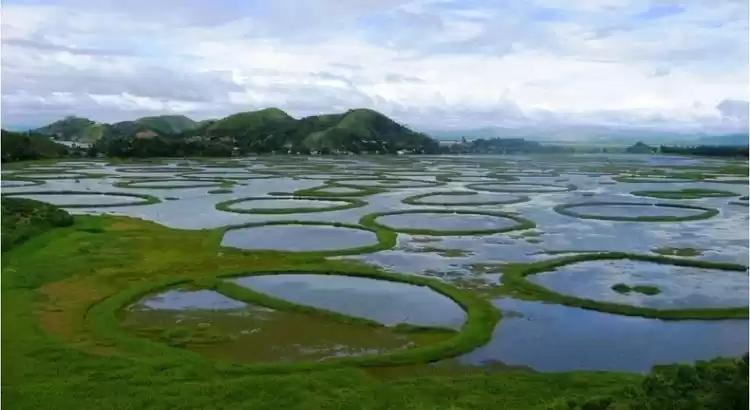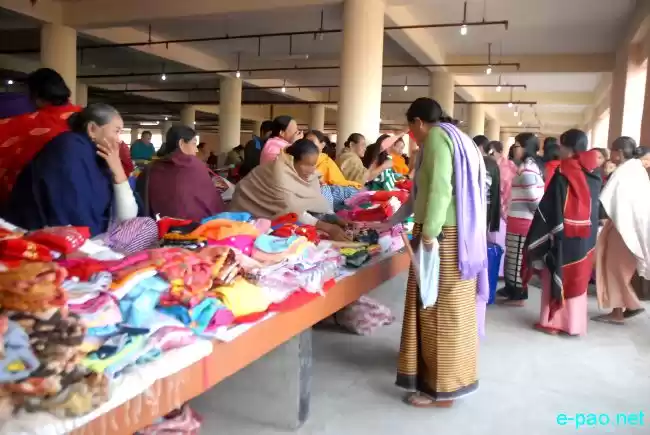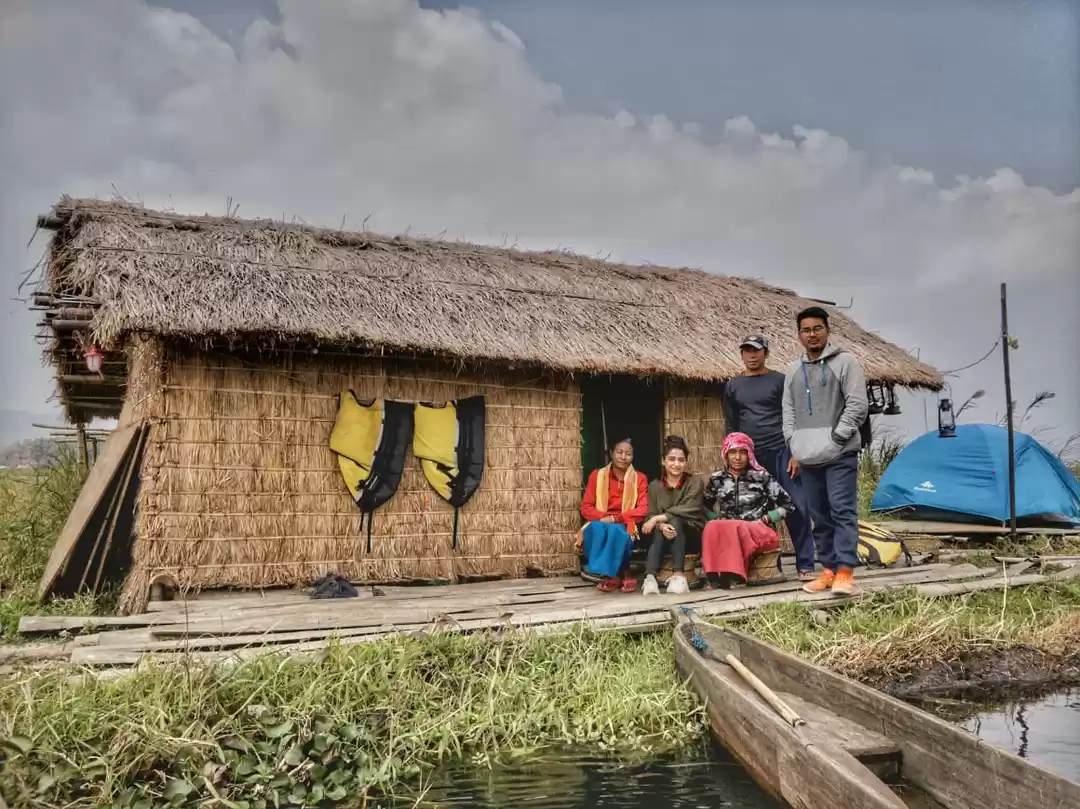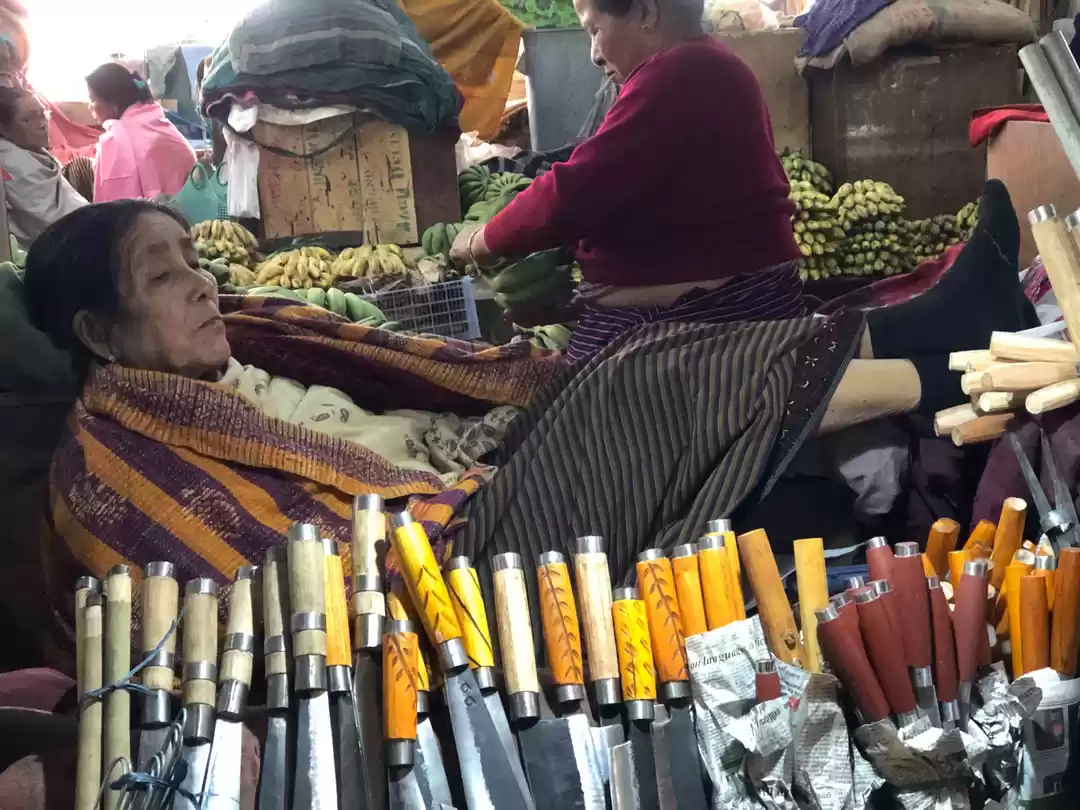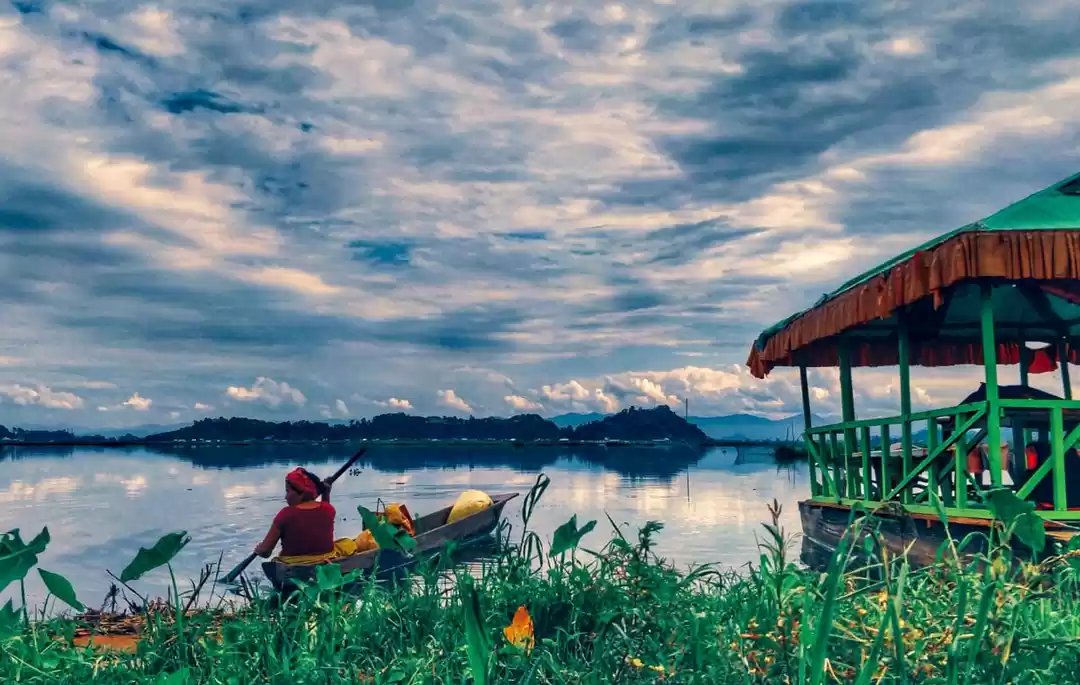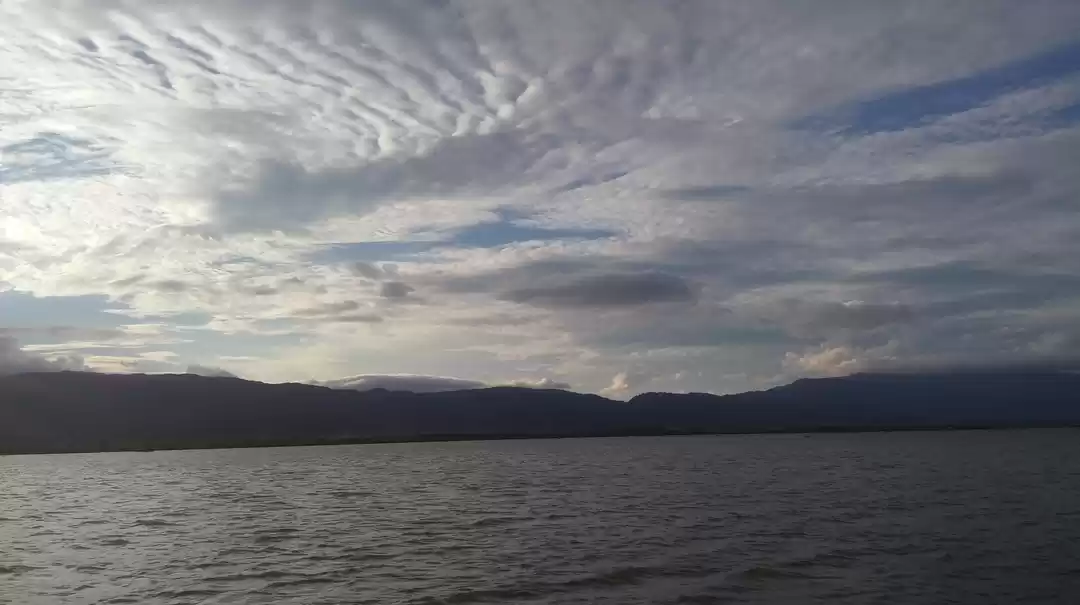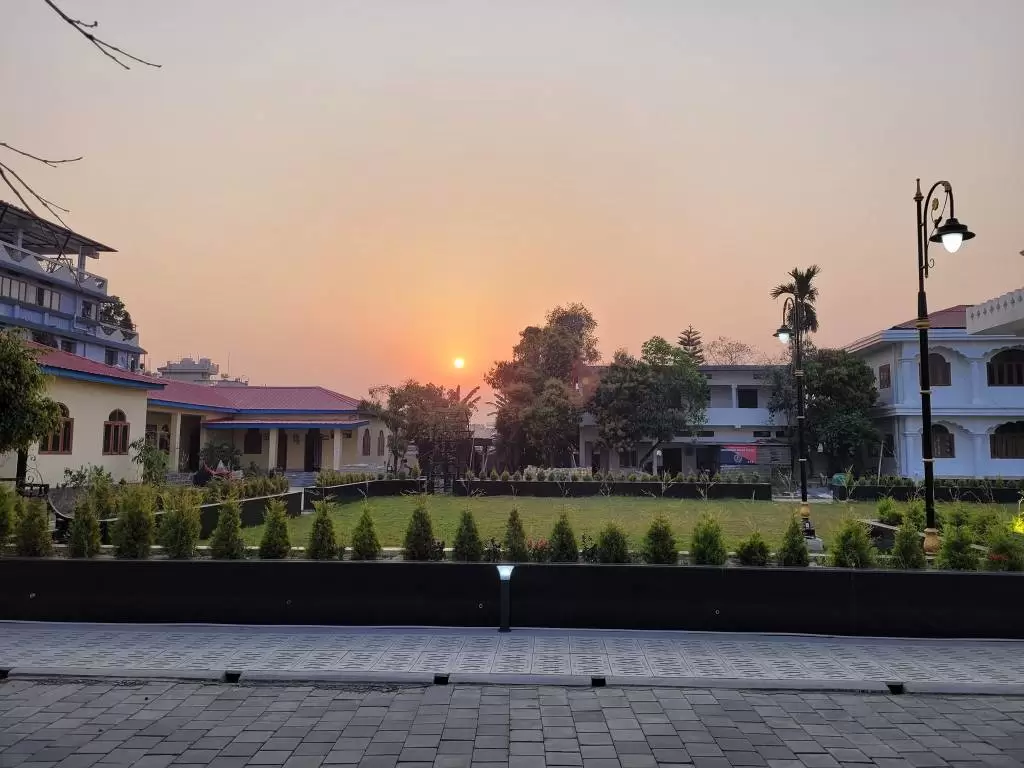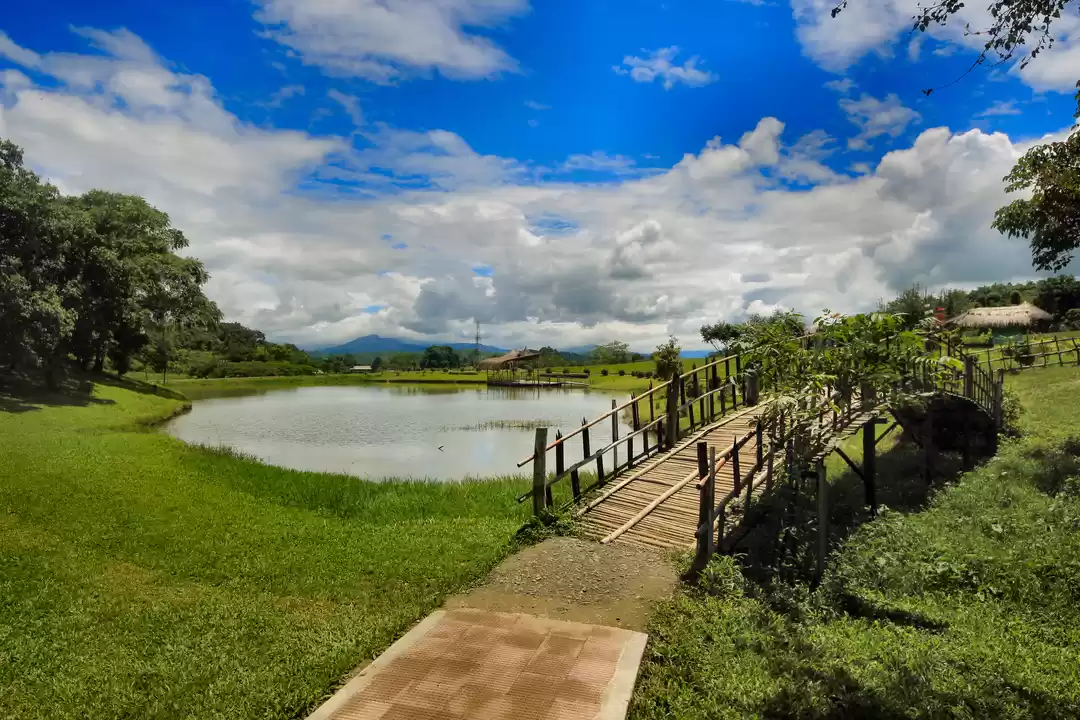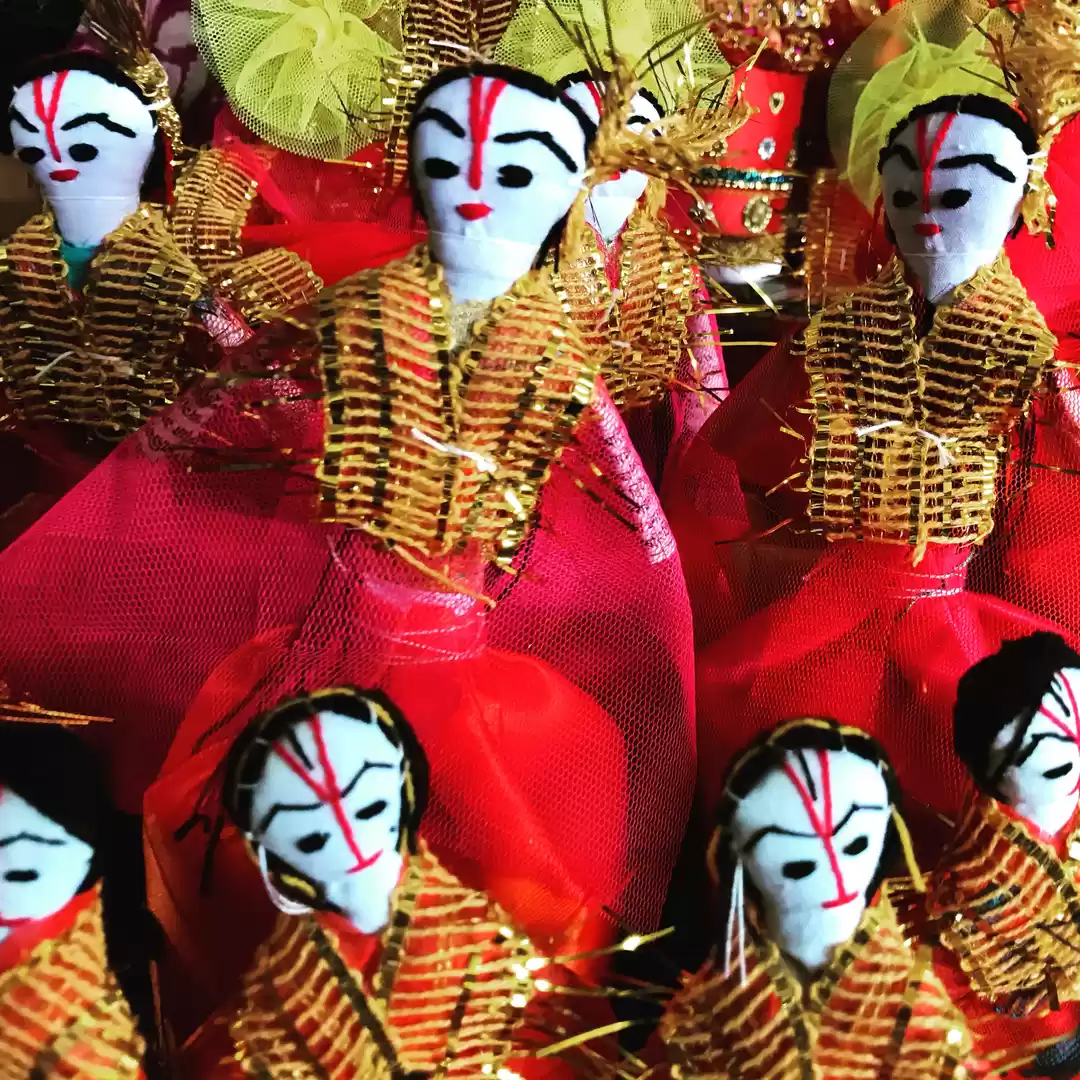
It had been four hours since we took refuge in patches of tall grass. Discreetly waiting for its appearance. The surroundings were quiet I could hear every cricket chirping on the calm winter evening. The grass was tall enough to conceal us. I took all precautions to exert less pressure on the ground as the land beneath me was a layer of thick biomass floating on water. Then it suddenly appeared, unaware of our presence. It was a beautiful sight, although short-lived. Two antlers raced behind each other carefully balancing on the several floating rings of grass, jumping from one to another. They were a pair of rare dancing deers I so waited to see! We were in the only floating national park on the planet, The Keibul Lamjao National Park on Loktak lake in Manipur, to see the rarely spotted Eld's deer, the Sangai, in its natural habitat.

What makes Loktak lake one of the best places to visit in Manipur?
Loktak is the largest freshwater lake in the northeastern region of India, in Manipur. It is a wetland of international importance and is a Ramsar site. It is the last natural refuge of the endangered Sangai Deer. The lake is beautifully covered with wide green rings of biomass, that stay afloat.
These geometrically shaped rings, locally called Phumdis, are formed naturally and usually connect to form a floating landmass. The thick marshy layer of soil supports the growth of tall grasses and sprouts on which the Sangai feed. The Phumdis are usually delicate and can only bear the weight of a Sangai when it is poised in its gait which resembles dancing... Tourists visit the park to watch this animal in its natural habitat.

Keibul Lamjao National park was formed in 1997 to protect the Eld's deer or Sangai. The best time to visit the park is in the morning, between 6 am to 10 am. Forest lodgings are available inside the park and are moderately priced. Other animals that greet you here are the Rhesus monkeys, Hoolock gibbons, Indian pythons, Sambhar, and barking deer, along with a variety of Himalayan birds.

Tourist Help
*Connectivity: The nearest airport is Tulihal at Imphal and the park is well connected by road
*Nearest Village: Moirang, 39 km from Manipur near Bishnupur district
*Themes: Nature, Wildlife, Eco-tourism
*Best time to visit: October- March
I was accompanied by Sukumar on this visit, a habitat specialist from Imphal who was also my guide for the excursion. He had worked for the conservation of Loktak lake. I stayed at the Sendra Park Resort in Moirang (the main center of Meity folk culture) on a hilltop, that gave me the best views of Loktak.
From our discussions, I concluded that the lake was important to the economy of Manipur and local villagers from the Meity tribe sourced their livelihood from the fishing activity at Loktak. Tourism had generously rewarded their conservation efforts. There were boats to travel between the Phumdis and the ecology of the lake invited various migratory birds and various species of hornbills and Himalayan waterfowls.

The next morning, my guide convinced a local fisherman to give us a ride in his canoe so we could look at the Phumdis closely. We were lucky as he happily agreed to show us the best of them while giving us more information on the lake (which Sukumar would translate for me). A local guide is must-have when you travel to Keibul Lamjao for an enhanced tourist experience.
The comeback of Sangai & the mystery of Phumdis !
Until 2009, The Loktak lake was a hub of militants, and insurgency activities on the floating islands were at its peak. Nearby hills and Phumdis had become an epicenter of terrorist activities. The Indian Army launched specialized operations to bust the terrorist network in the area and relentlessly worked to ensure all hidden arms and weapons were seized and the dangers of the region were wiped out.
It was a difficult task as the ground beneath their feet was delicate and not stable. Do not be surprised if you see an Assam rifles unit patrolling the lake in their boats!
Loktak Lake is now an important destination for tourism, thanks to the Indian Army.
Sangai was believed to be extinct in India by 1950. In 1953 three Sangai's were spotted and conservation measures were undertaken. In the last census in 2016, the number of Sangais reported was two hundred and sixty! The comeback of the deer was heroic!
Maintaining the ecological balance of water nutrients is crucial for the formation of Phumdis. They support the growth of grass for Sangai to feed on.

Places to visit in Manipur along with Keibul Lamjao National Park
*INA Museum
*Moirang Kangla Fort
*Siroi Hills in Ukhrul famous for Siroi Lilly
*Khangkoi Limestone Caves
* Nilai Tea estate
* Moreh, a hilltown also called as the gateway to South-east Asia

The fisherman rowed slowly and I had the chance to have a closer look at the lake. The Phumdis were black in color and porous in nature, likely to be of decomposing organic matter. The guide estimated their thickness to be about two meters underwater. Various insects housed the grass. At some places, the vegetation grew up to 6 feet tall.
I was enjoying the canoe ride and my guide handed me his binoculars to have a good look at the surroundings. Some older and stronger Phumdis had makeshift huts built on them. Paddy fields were visible at a distance near the lake. A Sangai seemed closer. The male Sangai had antlers that resembled a crown. This was far more exciting for me then spotting the jungle cats!

I got an opportunity to watch some beautiful birds that nested on the lake. The fisherman suggested a floating hut for traditional lunch.

The hut was simple and was made with straw held by bamboos. A lone banana plant grew next to it. A pair of half muddy trousers were left to dry outside the hut. It smelled of water weed but was neatly kept. We were offered a plate of bamboo shoot curry, fried beans called Lonchak, and a small bowl of rice. Red chilies dominated the taste. We drank water from a hollow bamboo carved by our host. The taste of Manipuri food pleased my palate and upon inquiry, I was told that rice, bamboo, fish, chilies, and flavored grass were commonly used in their diet. We thanked our host and canoed back to the resort. I could hear the engine of a motorboat at a distance.

On our way back, the fisherman described that Sangai was culturally important in Manipur and was deeply embedded in their folklores... like in one of them, a prince transformed himself into a deer. The fisherman's eyes twinkled as he spoke to me in Manipuri, revealing his excitement. Sangai was interpreted as the binding soul between humans and nature. Harming one was considered a sin. Today, the deer faced threats from poaching and habitat extinction.

I returned from the excursion to my resort and the itinerary reminded me of an evening show of Manipuri folk dance. My trip had been memorable. The evening was well spent watching the Manipuri Ras of Radha, Krishna, and the Gopis. Loktak lake was placed last on my itinerary of Manipur. I left for Imphal, to board my return flight the next morning after a quick tour to the local market, where I purchased a traditional dress called Phanek with horizontal stripes and mats made from native Kauna reed of Manipur.

While speaking of Manipur, I commonly spoke of its meandering rivers, classical dance, polo, sports, and movies. After the trip, I was sure the Sangai and the Phumdis would dominate my description!














